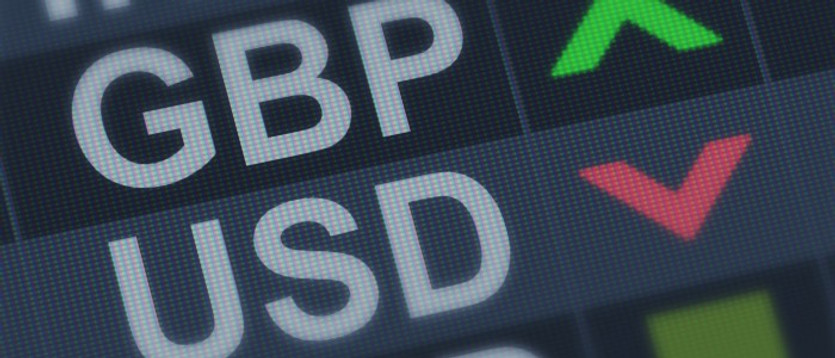The dollar reacted positively to the data on US producer prices presented on Tuesday. At the time of publication of this article, DXY futures were traded near the 94.12 mark, corresponding to the levels reached in mid-October and the levels of 14 months ago, 26 points above yesterday's low.
According to data released by the US Department of Labor, the final demand index (PPI), which broadly reflects the conditions of supply in the economy, rose 0.6% in October after rising 0.5% in September. The Core PPI (producer price index excluding food and energy) rose 0.4% in October after rising 0.1% in September.
Market participants are now awaiting the publication today (at 13:30 GMT) of consumer price indexes in the US, which may also indicate further growth, which will increase fears about inflation. Consumer prices are expected to rise 0.5% in October (+5.3% y / y).
The Core CPI (according to the forecast) increased in October by +0.3% and +4.0% (in annual terms). In September 2021, the value of the Core CPI indicator was +0.2% (+4.0% in annual terms), in August +0.1% (+4.0% in annual terms), in July +0.3% (+4.3% in annual terms). The data presented yesterday and expected today signals that a slowdown in US inflation is unlikely in the near future.
The Fed still considers inflation to be a temporary phenomenon, refusing to raise interest rates. However, Fed officials cannot ignore completely the rapid rise in inflationary pressures. Therefore, these data may put pressure on the subsequent decisions of the Fed leaders regarding monetary policy. If the inflation indicators expected today turn out to be stronger than forecasted, the trend for further strengthening of the dollar will intensify.
Otherwise, with weak inflationary indicators, one can expect a weakening of the dollar, but it is unlikely that it will have a protracted nature. The tendency for further strengthening of the dollar remains. Rising inflation could force the Fed to take more decisive steps to reduce economic stimulus. On Monday, US Federal Reserve Deputy Chairman Richard Clarida confirmed that inflation is well above the level that the regulator considers desirable, and could reach 4.0% this year. In his opinion, if the situation with employment, GDP and inflation continues to improve, then the rate hike may become relevant by the end of 2022.
While other major world central banks, primarily the ECB, the Bank of Japan and the Bank of England, have a clear focus on maintaining a soft monetary policy, the Fed's tougher stance on this issue is the main argument in favor of strengthening the dollar, first of all, in relation to its main competitors - euro, yen, pound.
On Thursday (at 07:00 GMT) the Office for National Statistics of Great Britain will present the next block of important macro statistics. In addition to data on industrial production and the foreign trade balance, information on the level of UK GDP for the 3rd quarter (first estimate) will be published. GDP is considered to be an indicator of the overall health of the British economy. The upward trend in GDP is considered positive for the GBP. Previous GDP figures: +5.5% in Q2 after falling -1.6% in Q1 2021, -19.8% in Q2 and +1.3% growth in Q4 quarter of 2020. The main factors that can force the Bank of England to keep rates low are weak GDP and labor market growth, as well as low consumer spending. If the GDP data turns out to be significantly worse than the previous values, it will put downward pressure on the pound. Strong GDP report will strengthen the pound.
As a result of the next meeting, which ended last Thursday, the Bank of England unexpectedly left interest rates unchanged, which put significant pressure on the pound quotes. The GBP / USD pair dropped 1.4% last Thursday, falling below 1.3500 and closing last week near 1.3495. Since the beginning of this week, the GBP / USD pair has been growing, trying to recover from the fall. However, while it is difficult for it to do it.
At the time of this posting, GBP / USD is traded near 1.3532, declining again since the opening of today's trading day.
Economists estimate that the UK economy could grow 6.9% this year, 4.7% in 2022, and then sharply slow growth to 1.7% in 2023 and 1.3% in 2024. The negative dynamics will be facilitated by a decrease in investment in business and a decrease in the inflow of personnel from the EU countries in connection with Brexit. At the same time, if the Bank of England continues to be inactive in relation to growing inflation (according to various estimates, next year inflation may reach 5% and remain high for longer than the Bank of England expects), then this will also leave a negative imprint on the pound quotes.
At the same time, the situation around Brexit suddenly escalated again. The UK is threatening to suspend implementation of certain Brexit clauses regarding Northern Ireland, which could force the EU to disregard the Trade and Cooperation Agreement. According to economists, this will be a disaster for the economies of Great Britain and the Republic of Ireland. This factor is unlikely to serve as a background for the further recovery of the pound, but is more likely to become a catalyst for its speculative sales. European Commissioner Maros Sefkovic, responsible for Brexit issues, will brief EU ambassadors and MEPs on talks with the UK on Wednesday.
Thus, in the medium term, the GBP / USD pair will most likely remain under pressure. At least in the short term, the pair has a downside potential towards support level 1.3390 (see Technical Analysis and Trading Recommendations).





